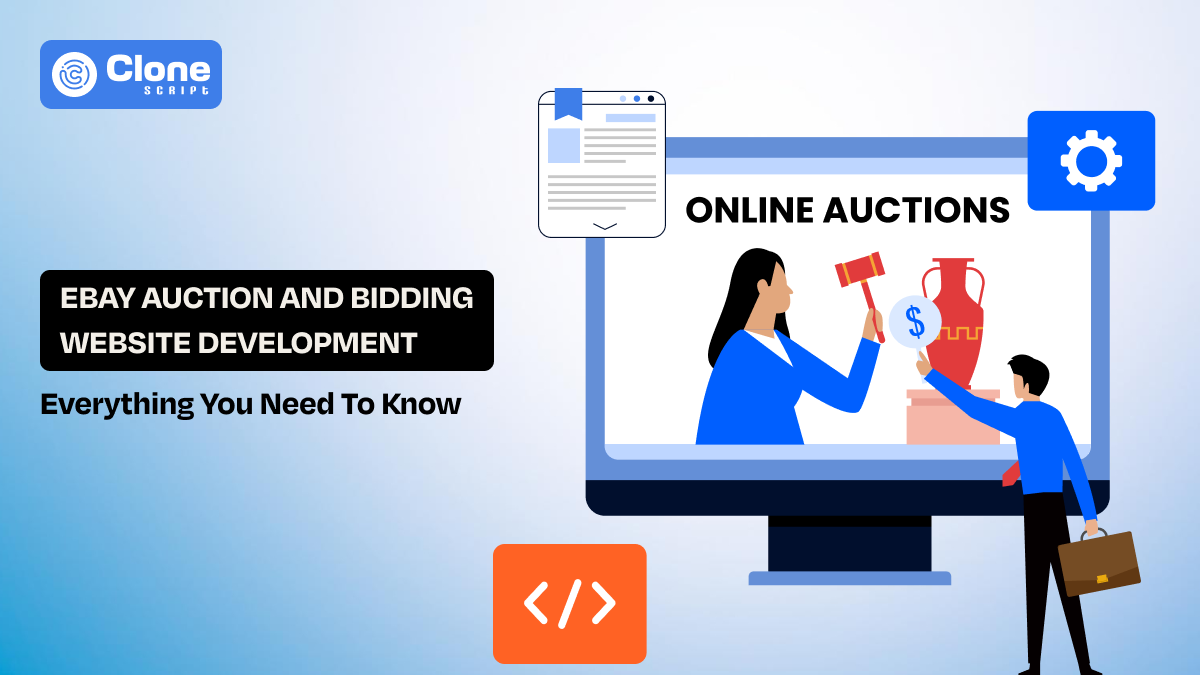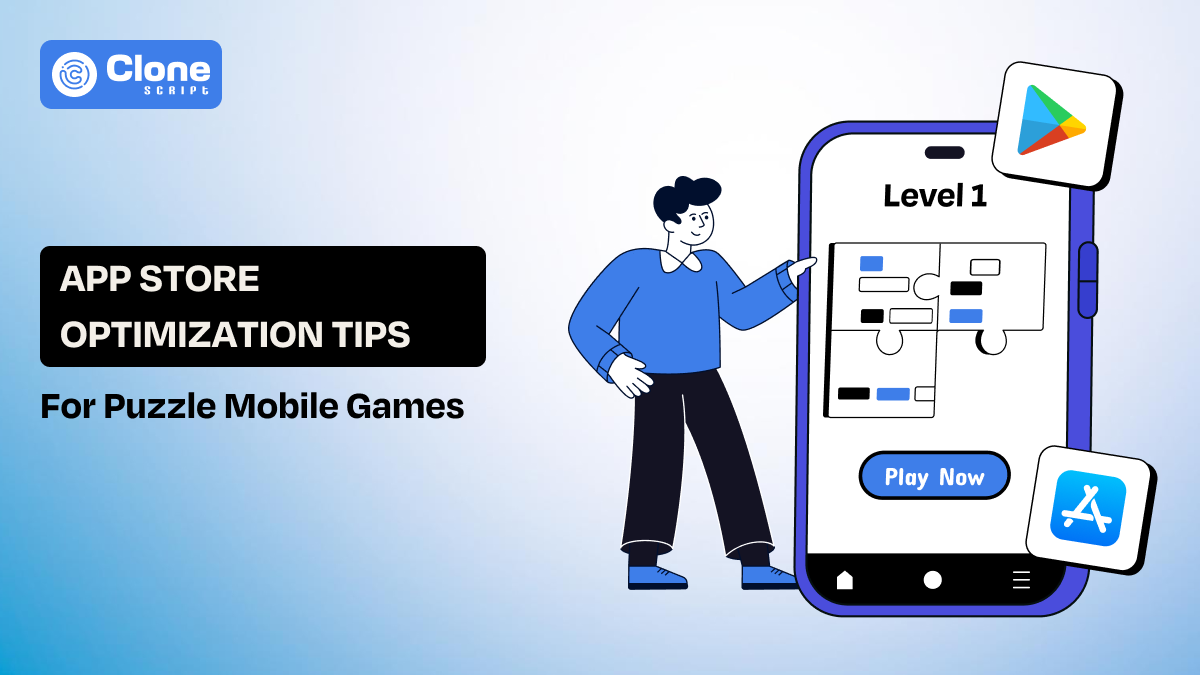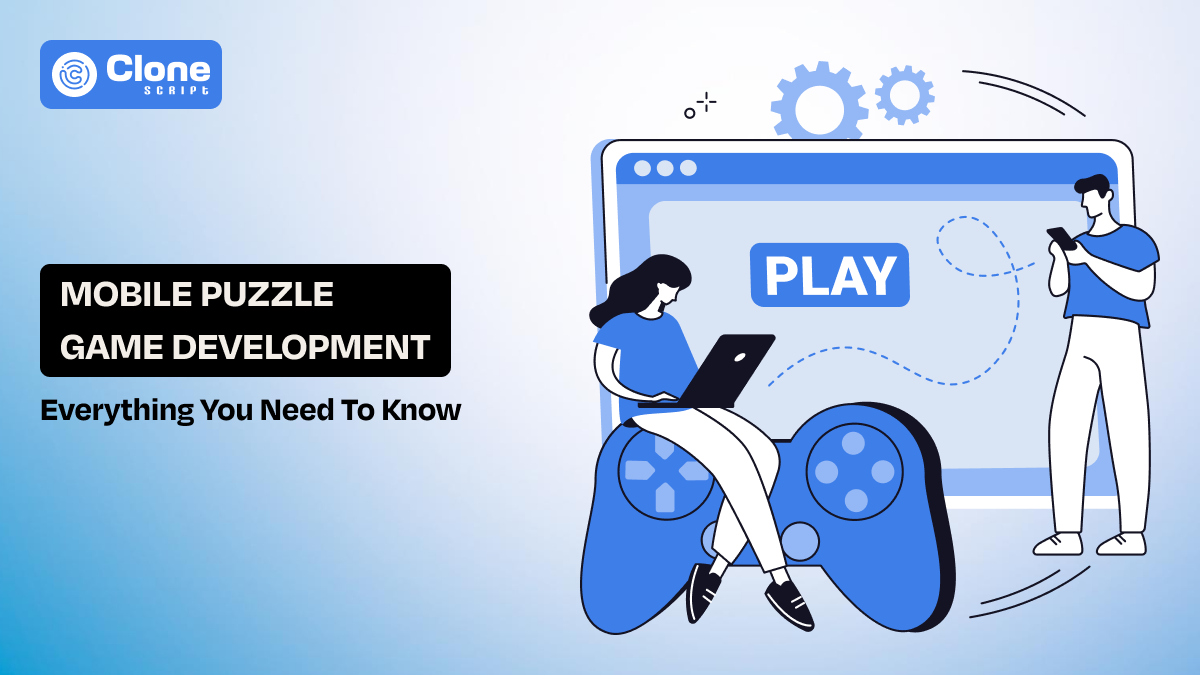Top 5 Ready-to-Use Figma Templates for Modern E-Commerce Websites
If you're building an e-commerce site in 2025, you're not just competing with local players; you’re competing with Amazon, Shein, Flipkart, and Shopify-powered mega stores.
So if your store has slow UX, confusing UI, or bad mobile design, you're done.
That’s why using pre-built Figma website templates is no longer a design shortcut. It’s a competitive advantage. The right template gives you:
-
A fully-structured design system to start development right away
-
Pixel-perfect components already tested across UX use cases
-
A clean, responsive layout that’s ready for mobile and desktop
-
Smart UI design, dashboards, and reusable elements that reduce front-end rework
In this blog, we’ll walk you through 5 of the best ready-to-use Figma templates crafted for today’s e-commerce businesses, whether you're selling fashion, toys, wellness products, or anything in between.
This isn’t a generic list. Each template is picked for real-world usability, UI depth, and developer-friendliness.
1. E-commerce Store Website Design Figma Template
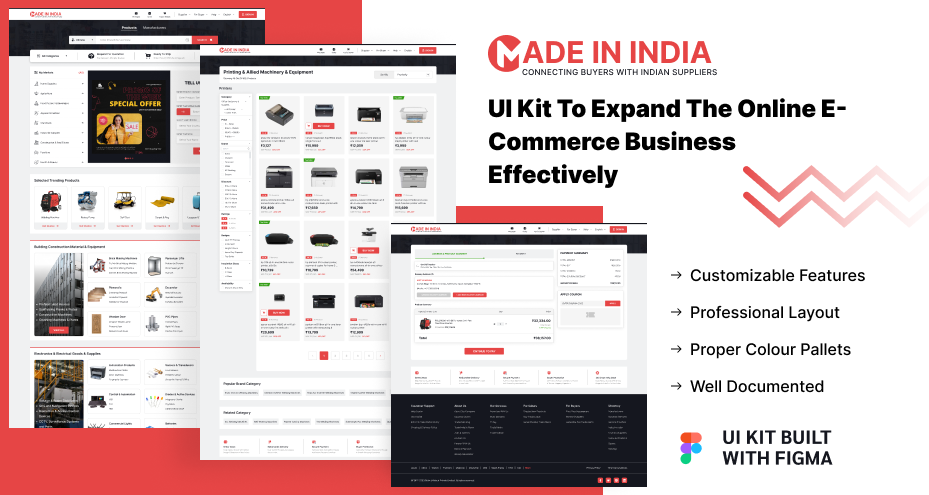
This is a multi-industry e-commerce UI kit made for rapid scaling. Whether you're launching an electronics store, a groceries app, or a general product marketplace, this template delivers serious structure. In other words, looking to be the next Amazon-like e-commerce marketplace, this web page UI design is a perfect start to lay the foundation.
What’s Inside:
-
Modular UI components for homepage, categories, product detail, cart, and checkout
-
Clean visual hierarchy for modern retail browsing UX
-
Auto layout and variant support for quick design edits
-
Global color & typography styles for brand consistency
-
Ready-to-use mobile and desktop views
Real Advantages for Devs & Designers:
-
UI elements like filters, price sliders, breadcrumbs, wishlists, and quick-add buttons are already grouped and functional.
-
No design guesswork, layouts follow current e-commerce user experience standards.
-
You can drop these components directly into your Figma web design project and begin prototyping instantly.
Ideal Use Case:
B2C general stores, electronics resellers, food & grocery delivery website developers working on both front-end and back-end.
2. Kids' Toy E-commerce Store Website figma template
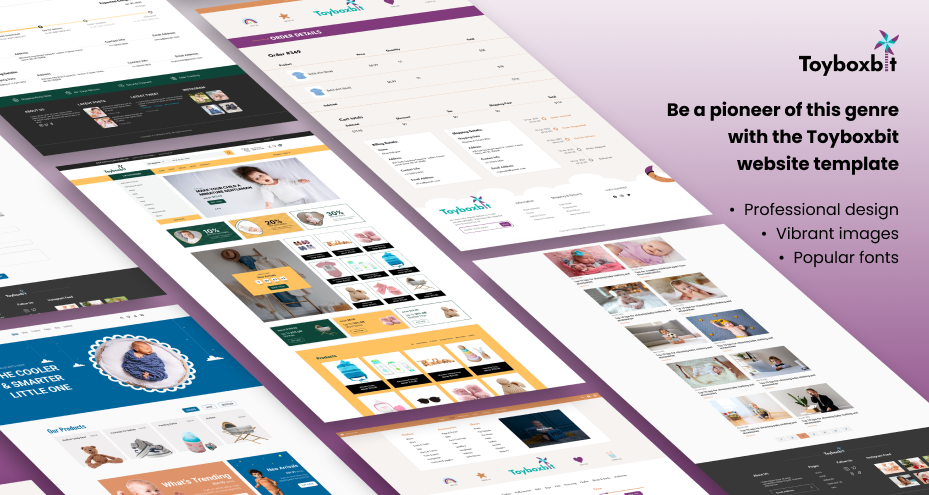
This Figma template is made for niche category products like Kids’ toys. Selling to parents and kids means your UI needs to engage emotionally while staying functional. This e-commerce website design nails it with vibrant layouts and smooth product presentation at a prominent level. So, skip the fear related to a product failure because it has been reduced while using the e-commerce UX optimized web UI design.
What’s Inside:
-
Bright colors, rounded buttons, cartoon-style icons
-
Age-based filtering, featured toys, carousel-style product galleries
-
Promo sections with built-in callouts for sales or bundles
-
Secure checkout flow to encourage higher conversions
Real Advantages for Devs & Designers:
-
Components are made with interactive UX in mind: hover effects, ratings, and animations are structured in variants.
-
The file uses clean auto layout, so developers can translate UI to code with zero pixel gaps.
-
You save hours of manual UI building for elements like quick-view, filters, and hero blocks.
Ideal Use Case:
Toys, educational products, children’s brands, and family-focused e-commerce website development agencies or freelancers.
3. Modern Fashion E-commerce Store Figma Website Template

Does your client have multiple fashion clothing products (Men, Women, Kids) and need a better business platform to get leads from online? You can manage the workflow using this Figma UI kit for e-commerce website development. With every pre-optimized screen and web design asset, you can quickly jump to the necessary front-end development and then integrate with the servers. Within 3-4 days of optimal work, the client will get a live website and start selling fashion-branded clothes.
In fashion, how you present a product is half the sale. This Figma template is crafted with large visuals, minimalist text blocks, and layout spacing that lets the product speak for itself. To accomplish clients’ e-commerce apparel business objectives, you have to pick the right web design now.
What’s Inside:
-
Category pages with filter drawers, tag swatches, and sizing charts
-
Zoomable product detail pages with sliders for images
-
Style guide with brand palette and font system
-
“Shop the look” layout and editorial blog structure included
Real Advantages for Devs & Designers:
-
Saves you from building editorial layouts from scratch, as it already includes.
-
Optimized web page UI design helps increase dwell time and reduce bounce rate.
-
Image placeholders are set to real ratios (1:1, 2:3, etc.), so dev teams don’t need to fix aspect ratios later.
Ideal Use Case:
Web development company having a clientele of clothing stores, boutique brands, influencer merch, and editorial-style shops
4. Health Supplements E-commerce Store Web Design Template
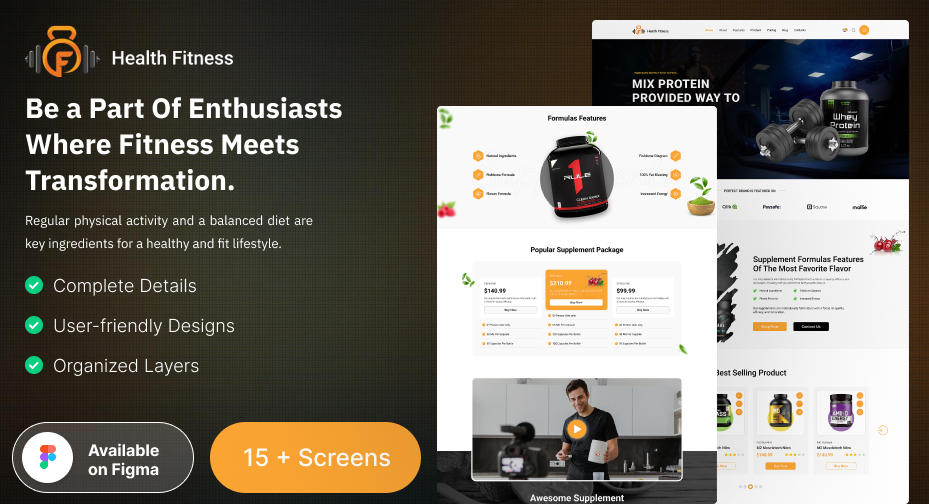
Health product websites must earn trust fast. This template uses credibility-focused UI elements like customer reviews, certifications, clean dosage displays, and product highlights. If your client is a D2C brand focusing on selling health supplements or offering niche fitness products, this Figma website design template can be the right tool. By purchasing it and integrating it with your web development workflow, and customizing it according to a reputable branding element.
What’s Inside:
-
Built-in layouts for subscription plans (one-time vs recurring)
-
Product details with ingredient breakdown, usage guides, and review sections
-
Trust-building components like certifications, customer success stats, and FAQs
-
Structured for CRO with large CTA blocks and offer modules
Real Advantages for Devs & Designers:
-
The UI of the website is conversion-optimized: sections are already A/B tested for trust signals.
-
Dev teams get checkout-ready flows, cart summaries, and subscription toggles pre-built.
-
The Figma file is structured with layers, naming conventions, and smart groups.
Ideal Use Case:
E-commerce website developers managing a development project for D2C brands selling vitamins, supplements, fitness products, and wellness.
5. Women’s Handbags E-commerce Website Figma template
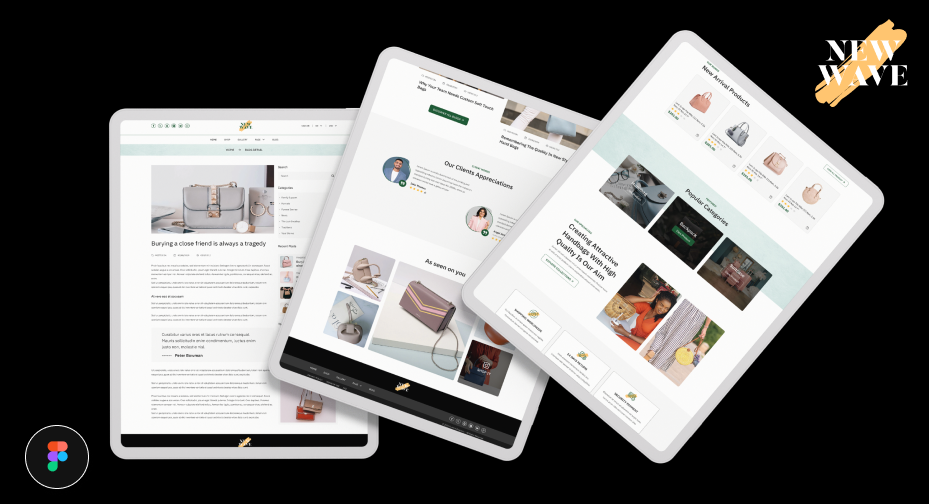
In niche product-based e-commerce stores, a focus on user intent is very important to encourage them to make a purchase or inquire about products. Introducing this website UI design made with Figma and optimized for premium handbag brands selling products to women.
Whether your client is an Indian metro city-based or any of the U.S. states, this Figma template can be the perfect pick to start a web development project. It contains an editorial design with high-resolution gallery layouts and stylish fonts to convey value to present luxury items delightfully.
What’s Inside:
-
Hero banners, minimalist product cards, premium lookbooks
-
Image-rich product pages with swatches and zoom functionality
-
Storytelling sections for brand identity, craftsmanship, or sustainability
-
Built-in layouts for collections, testimonials, and blog posts
Real Advantages for Devs & Designers:
-
Gallery-ready templates let you import high-res images without worrying about layout breakage.
-
Editorial layouts help boost SEO and brand storytelling in blog and about pages.
-
Consistent visual rhythm reduces cognitive load on users, increasing checkout flow completion.
Ideal Use Case:
Online store web developers manage clients of luxury fashion, leather bags, jewelry, home décor, and designer brands.
Purchasing a Figma UI kit is just a 20% work. After that, you have to focus on what matters the most: using it in a web development project.
How to do?
Here are the steps to follow.
Integrating Templates into Your Workflow.
When you drop one of these e-commerce web design templates into your project:
-
Start by copying core components (header, product cards, filters, footers) into your project file. Get only the necessary pages, not every as it does not matter for end-users.
-
Apply your brand fonts and global color variables. Inherited tokens ensure consistency and branding promotion.
-
Re-map product images, swap hero background, and tune copy to your catalog. Present yourself as a trusted and professional business from the first landing page.
-
Prototype shopping interactions: hover, modals, cart sidebar, testimonial slider, quick add. Know what kind of features a client requires and do it easily in the Figma file.
-
Collaborate: Developers can inspect components, grab CSS‑ready snippets, and maintain layout autonomy. This reduces manual checks and frequent modifications, resulting in great product output.
This is how you use Figma as more than just a design tool. It becomes your central UI design dashboard and collaboration hub.
Additional note:
Customizing a website design template is becoming easier with a complete understanding of brand goals, so if you work as a team of web developers or a freelancer, make sure to be familiar with the client’s expectations.
Final Thoughts
A great e-commerce site template is not just about pretty visuals, it’s about:
-
Speeding up design & dev workflows
-
Reducing UI/UX errors
-
Improving time-to-market
-
Increasing conversion rates with battle-tested UI components
The templates shared in this guide are more than UI kits. They’re full systems with Figma website design best practices built in.
Whether you're building your first online store or scaling a brand working as a website development company, using the right Figma web design template means spending less time reinventing the wheel and more time focusing on product, marketing, and growth.
Ready to upgrade your next e-commerce project?
Start with the template that best fits your niche, apply your brand system, and start building smarter, not slower.
FAQs
-
How do I convert a Figma e-commerce UI into a coded website?
After finalizing your Figma website design, developers can inspect elements via Figma’s Dev Mode to get pixel dimensions, spacing, colors, and font data. From there, they use frameworks like HTML/CSS, React, or Tailwind to turn the visual design into a live website. You can also use tools like Anima, Framer, or Webflow for visual-to-code translation.
-
Are Figma templates suitable for beginners building e-commerce sites?
Yes, especially when they include clear layer naming, organized pages, and a style guide. Templates reduce the learning curve by offering professional layout standards. They're ideal for beginners who want to focus on content and branding instead of layout mechanics.
-
Can I customize Figma e-commerce templates for my brand?
Yes, most Figma website templates are fully customizable. You can change fonts, colors, images, icons, and layouts to match your brand identity. Templates usually include a style guide to make this process faster and more consistent.
-
What should I look for in a Figma web design template for e-commerce?
When purchasing an e-commerce website design, look for:
-
Auto layout for responsiveness
-
Reusable components (product cards, nav bars, filters)
-
Global style guides (colors, typography)
-
Pre-built pages: home, product, cart, checkout
-
Clean layer organization for developer handoff
These ensure your figma web design is scalable, responsive, and easy to maintain.
-
Can I use Figma templates to build a real e-commerce site?
Yes, Figma templates provide the visual and structural design of your site, including UI components like buttons, product cards, and layouts. While Figma doesn't generate code directly, these templates are developer-friendly and can be easily translated into React, HTML, Vue, or other frameworks during front-end website development.
-
What is the best Figma template for an e-commerce website?
The best Figma template for an e-commerce website depends on your niche, but top-rated options include the Made in India e-commerce UI kit for general stores and the Fashion Store UI Kit for clothing brands. These templates offer pre-built layouts for product listings, cart flows, and checkout screens, helping developers and designers move faster with modern design systems.
 BTC - Bitcoin
BTC - Bitcoin
 USDTERC20 - USDT ERC20
USDTERC20 - USDT ERC20
 ETH - Ethereum
ETH - Ethereum
 BNB - Binance
BNB - Binance
 BCH - Bitcoin Cash
BCH - Bitcoin Cash
 DOGE - Dogecoin
DOGE - Dogecoin
 TRX - TRON
TRX - TRON
 USDTTRC20 - USD TRC20
USDTTRC20 - USD TRC20
 LTC - LiteCoin
LTC - LiteCoin



